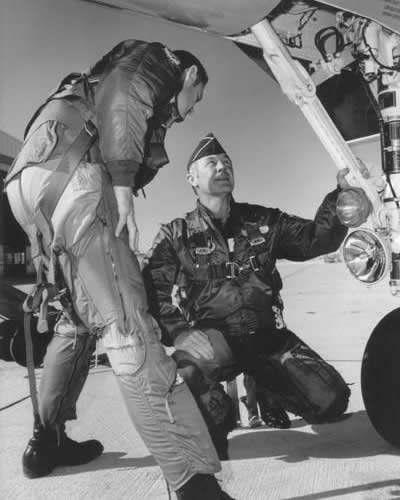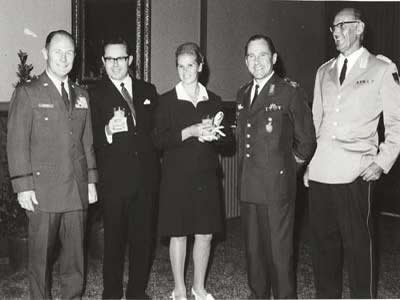Last Active Duty Flight
In July 1969, Brigadier General Yeager returned to Europe as vice commander of the Seventeenth Air Force where he worked closely with the West Germans in organizing joint exercises and training. In January 1971, he moved into an entirely different type of assignment when he became U.S. Defense Representative to Pakistan at a time when tensions were high in that region of the world. He returned stateside in March of 1973 to take over as USAF Director of Aerospace Safety at Norton AFB, CA.
On 25 February 1975, he returned to Edwards AFB for his last official active duty flight in an F-4C Phantom II. When he climbed out of the cockpit that day, he had accumulated a total of 10,131.6 hours in some 361 different types and models of military aircraft during an extraordinary flying career. Three days later, on 28 February 1975, General Jimmy Doolittle, Maj Gen Albert Boyd and Jackie Cochran were among the dignitaries in attendance as he completed his active duty service during ceremonies at Norton AFB.

As USAF Director of Aerospace Safety, he logged his first flight in the new F-15 Eagle at Edwards AFB on 6 March 1974.

A pair of aces: Yeager and famed World War II German ace Gunther Rall (2nd from right; 275 combat victories) during a meeting at Ramstein Air Base, West Germany, 1970.
